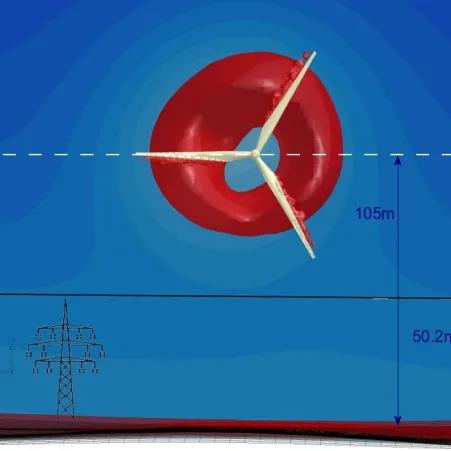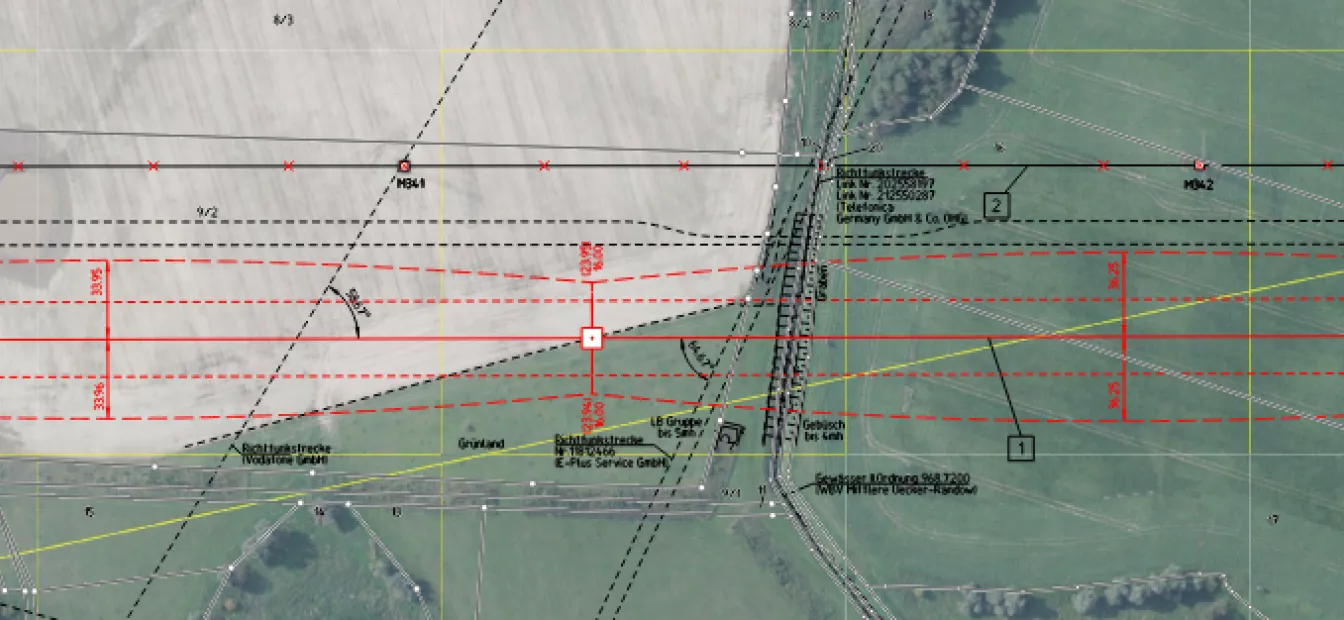High voltage and wind power
The rotor of a wind turbine generates additional air vortices or turbulence in its wake. Overhead power lines may reach heights at which the conductor cables are caused to vibrate, if certain wind condition occur. For this reason, there is a minimum horizontal distance between the WTG tower axis and the outermost stationary cable of the overhead power line. This includes a working area of the WTG, in which working areas for cranes are provided, for example, and specific voltage-dependent minimum distances of the respective overhead power lines.
In some cases, it is uncertain whether the conductor cables are outside the wake of the wind turbine. Without a positive assessment, this requires vibration protection measures up to a distance of three rotor diameters on the conductor cables.

Proof
Wind farm planners and operators of overhead powwer lines receive increased planning certainty with an assessment. This can avoid unnecessary costs for the installation of vibration dampers on conductor cables. In many cases, a simplified geometric method is sufficient for this assessment. If there is no positive statement, a 3D flow simulation can be used for further assessment.

Simulation
We can simulate wake flows and identify potentially damaging areas for the overhead power lines. Using three-dimensional computational fluid dynamics (CFD) simulations, wake flows can be determined on a site-specific basis.
Frequently asked questions
What documents do I need for an overhead power line assessment?
The client shall provide the necessary documents in writing or preferably electronically. Necessary input data is
- Consistent coordinates (UTM WGS84 system or similar) of all planned wind turbines to be taken into account
- the respective WTG type with nominal power and hub height
- Consistent coordinates (UTM WGS84 system or similar) of all overhead line masts to be taken into account
- Information on the voltage level of the overhead power line masts and the width of the protective strip
- Information on the pylon geometry (if possible, pylon heights, crossbeam widths, height of the earth cable or highest conductor cable)
- Information on the working area for the wind turbine assembly cranes.
How close can I place a WTG to an overhead power line?
The area covered by the rotor must not protrude into the protection zone of the overhead line. The protection zone is determined individually. For overhead lines with an output of more than 110 kV, a minimum distance of 30 metres from the outermost stationary conductor is sufficient in most cases. This assumes that the area between the WTG and the overhead line is not used as a working area during installation. Otherwise, the distance between the WTG and the overhead line must be increased.
When do I need an assessment of the impact of wind turbines on overhead power lines?
The verification is required if the distance from the tower axis of the WTG to the nearest stationary conductor cable is less than three rotor diameters of the WTG.
What happens if my WTG is too low and the overhead line is within the wake of the WTG?
The assessment procedure of the DIN standard is very conservative. A 3D flow simulation can clarify the potentially damaging area of the wake of a wind turbine. This often shows that the overhead line lies outside the wake. In exceptional cases, vibration damping measures must be taken on the overhead line. It is therefore always possible to construct the WTG as long as the minimum horizontal distance to the overhead line is maintained.

